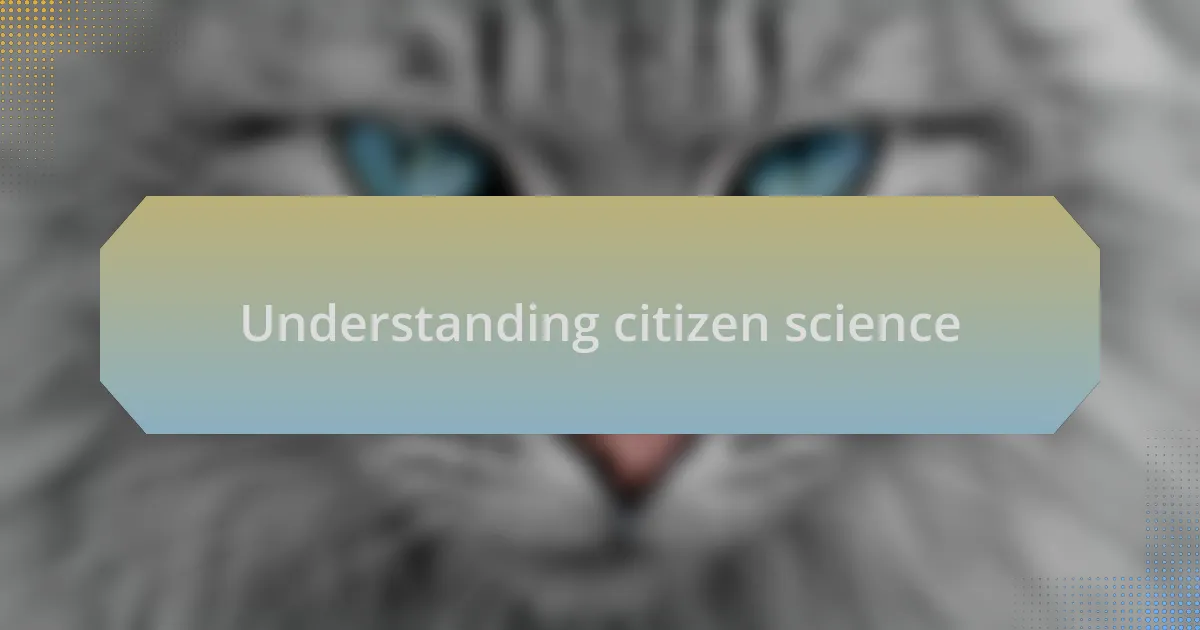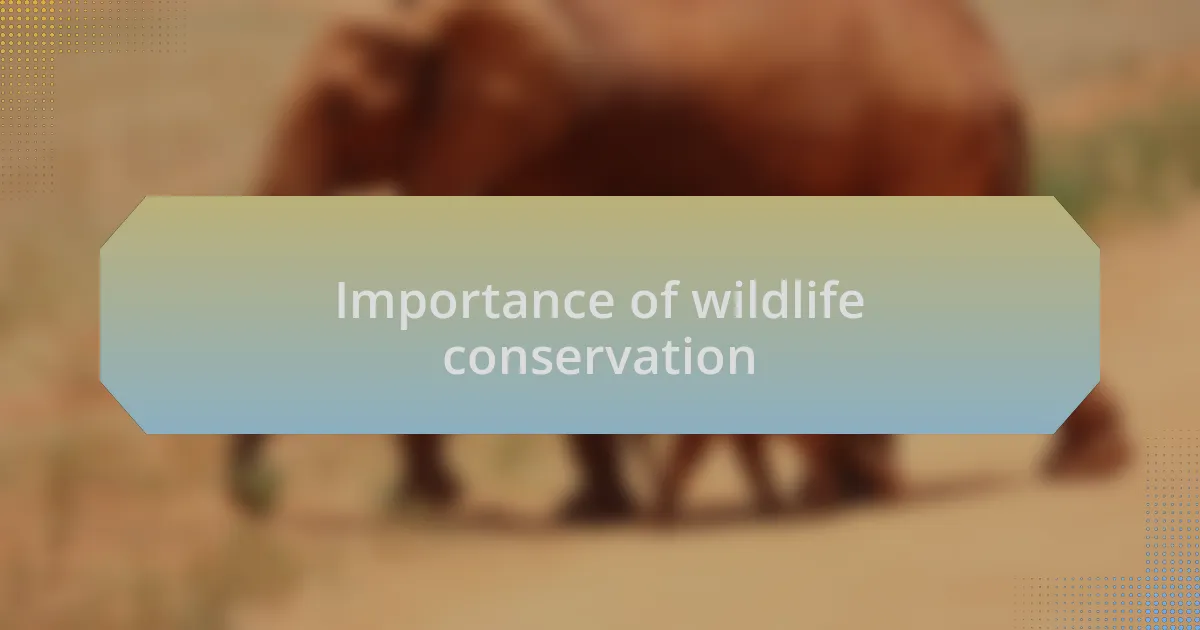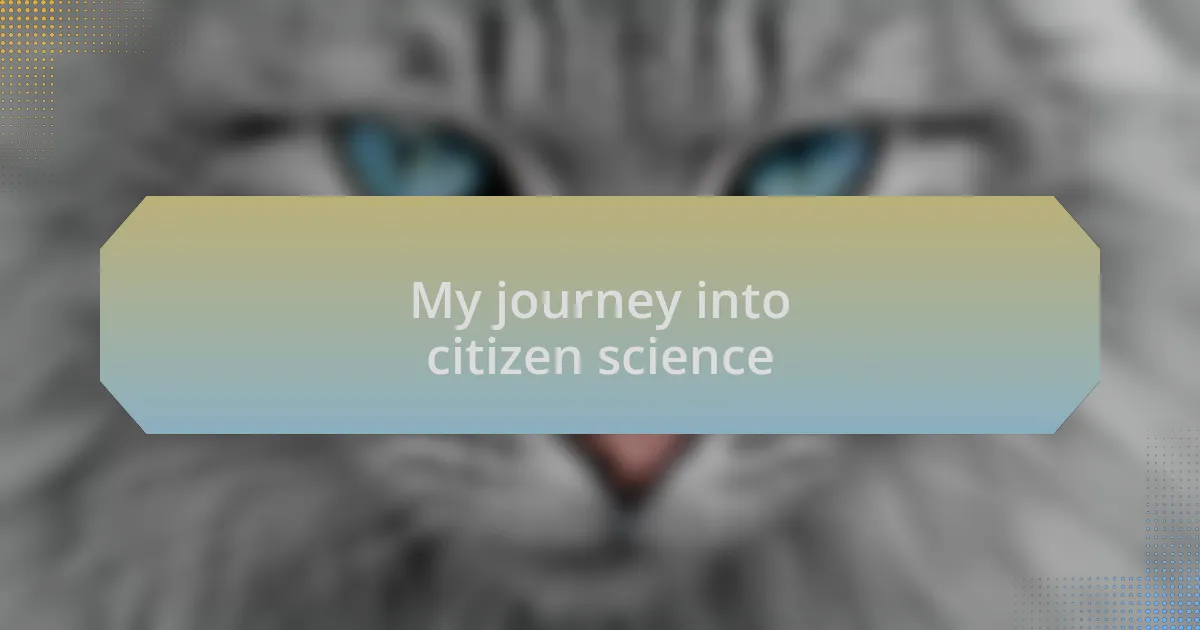Key takeaways:
- Citizen science empowers the public to engage in scientific research, fostering personal connections with nature and environmental issues.
- Wildlife conservation is essential for ecosystem health and biodiversity, directly affecting human well-being and the environment.
- Choosing a biodiversity project should align with personal passions and local opportunities, promoting accessibility and meaningful impact.
- Collaboration and community within citizen science initiatives enhance learning and deepen commitment to conservation efforts.

Understanding citizen science
Citizen science is a powerful way to engage the public in scientific research, allowing everyday individuals to contribute to real-world data collection and problem-solving. I remember my first experience, standing in a field with a group of enthusiastic volunteers, each of us armed with field guides and notepads. It was thrilling to realize that our collective efforts could help track species that were often overlooked, revealing patterns about their habitats and behaviors.
Through citizen science, people not only gather important data but also develop a deeper connection with nature. I often find myself wondering how my small actions contribute to the bigger picture. Each observation I make, whether it’s noting a bird’s migration or mapping a rare plant, feels like a thread woven into a larger tapestry of awareness and appreciation for biodiversity. It’s an inspiring reminder that everyone, regardless of their background, has the potential to make a difference.
Moreover, citizen science projects create a community of like-minded individuals who share a passion for conservation. I still fondly recall the friendships formed during my first project, united by a common goal. This collaborative spirit fosters learning and encourages us to support each other in our quests to protect the environment, making every observation more meaningful than just data collection.

Importance of wildlife conservation
Wildlife conservation is crucial as it directly impacts the health of our ecosystems. I recall a summer I spent volunteering at a local wildlife rehabilitation center, where I witnessed firsthand the ripple effect a single species can have on its environment. When an injured hawk was rehabilitated and released, it not only regained its freedom but also re-established its role as a predator, maintaining the balance within the prey population. Isn’t it fascinating how interconnected everything is?
Protecting wildlife also ensures the preservation of biodiversity, which is vital for the resilience of our planet. I often ponder the beauty of this diversity when I hike through different ecosystems, marveling at how each species plays a unique role. For instance, when we lose pollinators like bees, the effect on crops and flowers is immediate and detrimental. How can we expect to flourish as humanity if we neglect our fellow creatures?
Moreover, wildlife conservation has significant implications for human health and well-being. I remember attending a seminar where experts explained how healthy ecosystems can filter water and air, contributing to cleaner surroundings. It struck me that conserving wildlife isn’t just an environmental issue; it is a crucial aspect of safeguarding our livelihoods. Don’t we owe it to ourselves and future generations to maintain the balance that nature has so meticulously designed?

Choosing a biodiversity project
Choosing the right biodiversity project can feel overwhelming at first, but it’s essential to find one that resonates with your passions. I vividly remember sifting through various initiatives and finally discovering one focused on restoring local wetlands. The moment I realized how crucial these ecosystems were for countless species—and for my community’s water quality—made all the difference. Have you ever felt that spark of connection with a cause?
As you explore potential projects, consider the impact you want to make. One day, I volunteered with a group monitoring butterfly populations in a nearby park. The joy of witnessing a population surge, knowing our efforts helped create a supportive habitat, was exhilarating. When you see firsthand how your contributions can foster life, it reinforces the significance of the work you choose to engage in.
Additionally, it’s important to evaluate the accessibility of these projects. I remember a daunting feeling when I looked at a project that required extensive travel and expensive equipment. However, I soon found local initiatives that welcomed beginners and provided all necessary tools. Isn’t it empowering to realize that making a difference can start right in your own backyard?

My journey into citizen science
As I embarked on my journey into citizen science, I initially felt a mix of excitement and uncertainty. I distinctly recall my first team meeting, where seasoned volunteers shared stories of their discoveries and challenges. Their passion was infectious, igniting a spark in me that made me believe I could contribute meaningfully too. Have you ever been in a room where the energy just lifts your spirits?
One defining moment for me was when I participated in a local bird count. Armed with nothing but a notebook and a pair of binoculars, I found myself completely immersed in nature. Spotting a rare species made my heart race, and realizing that my observation contributed to a larger understanding of migration patterns was impactful. Isn’t it fascinating how our little efforts can weave into the broader fabric of scientific knowledge?
Over time, I learned that the citizen science community thrives on collaboration and shared learning. I remember how genuinely heartwarming it was to gather with my team after a long day in the field, sharing not only data but also laughter and camaraderie. Those connections deepened my commitment and transformed my individual efforts into a collective mission. Don’t you think there’s something magical about working together for a common goal?